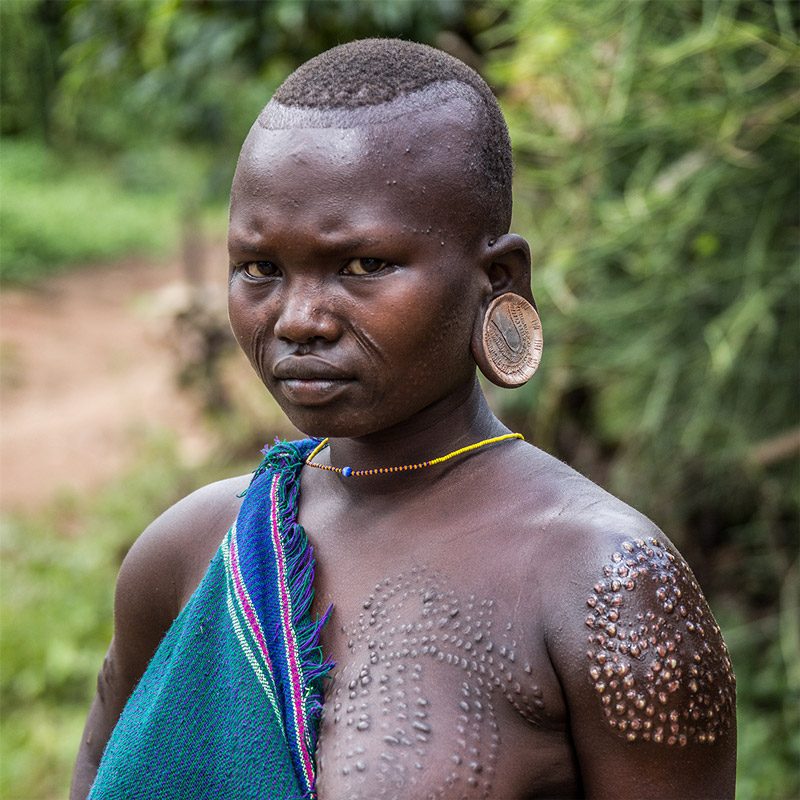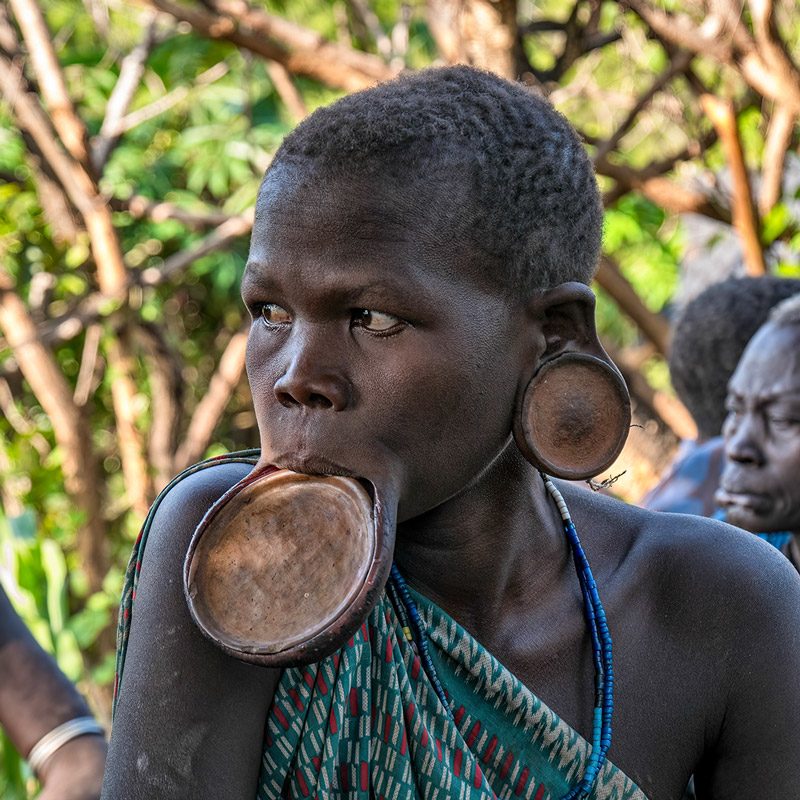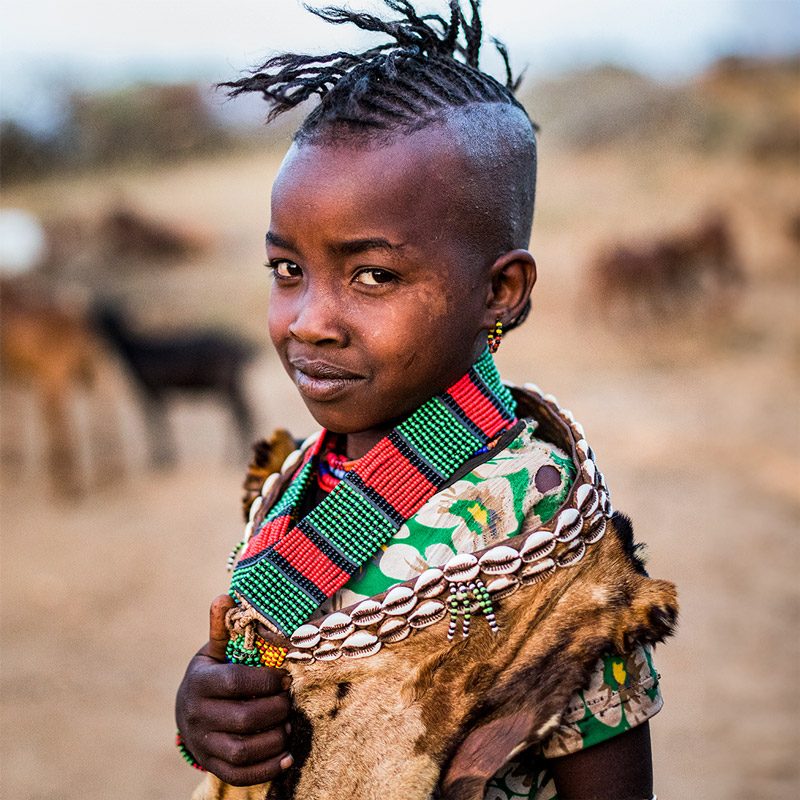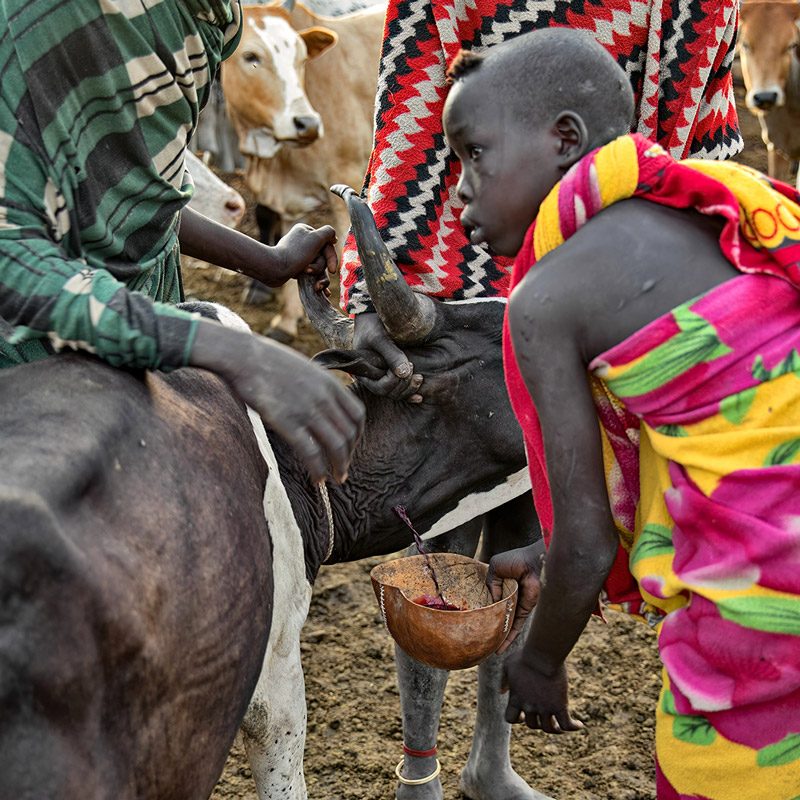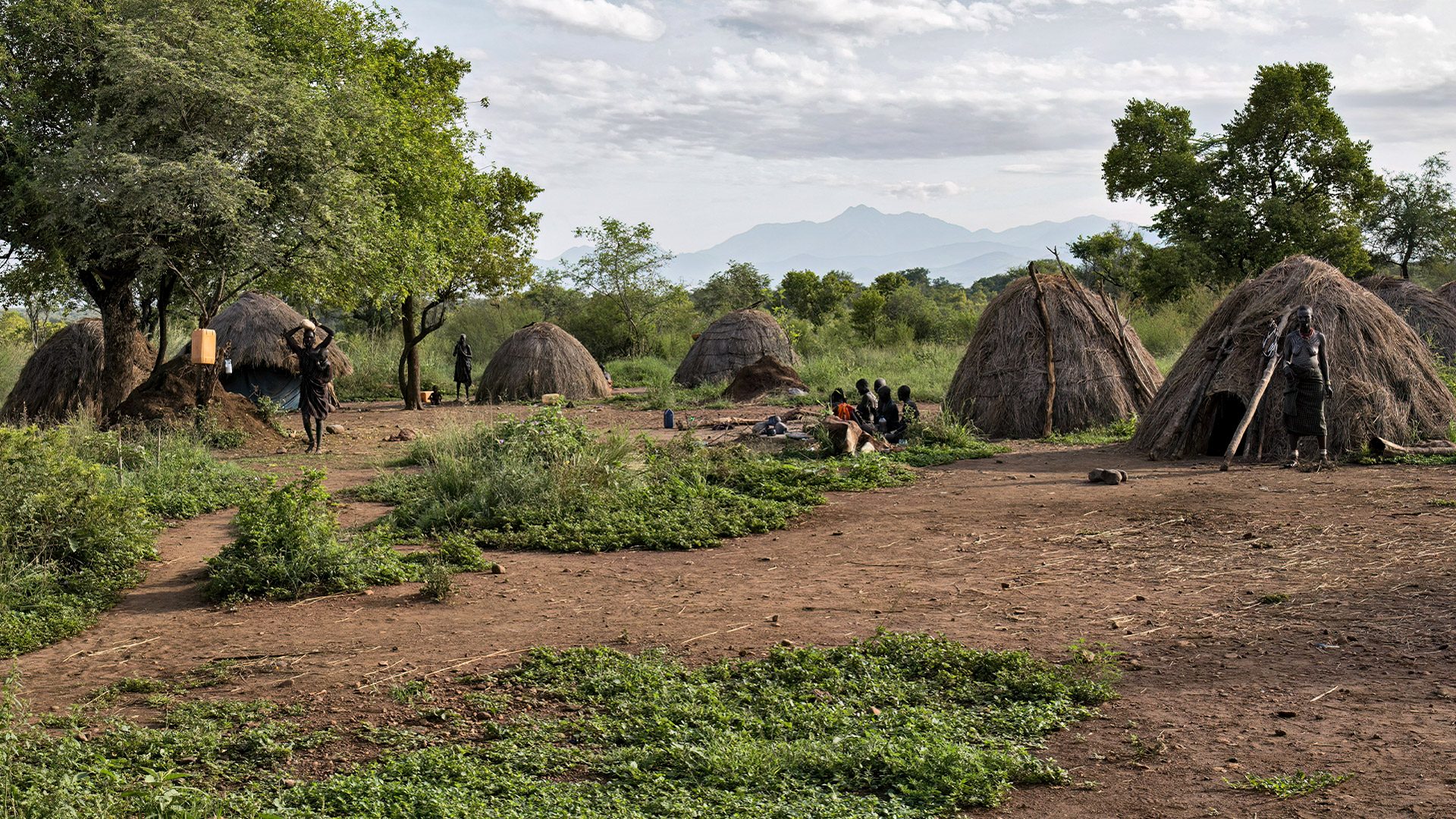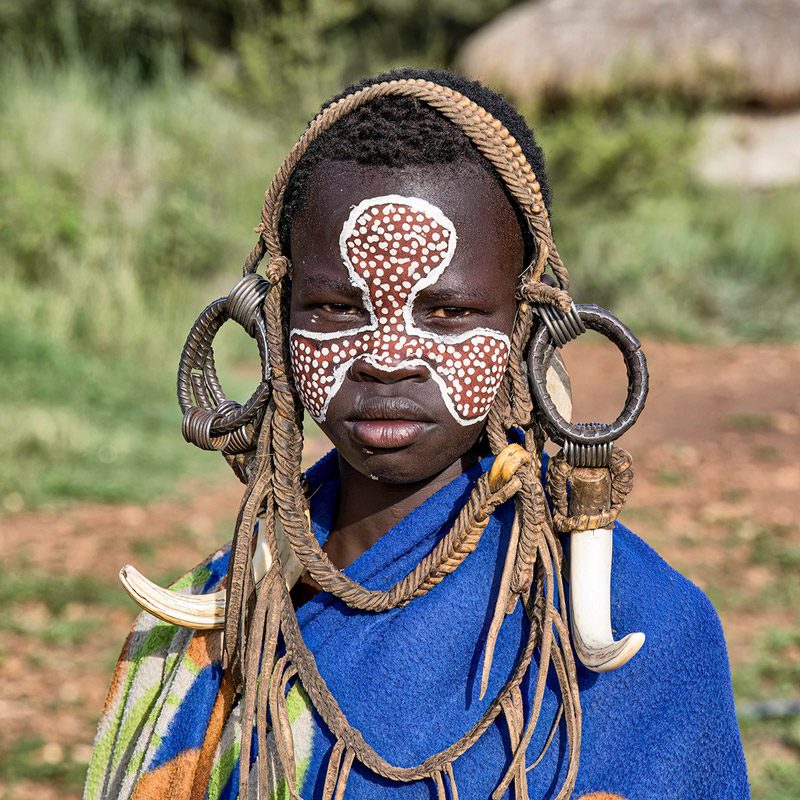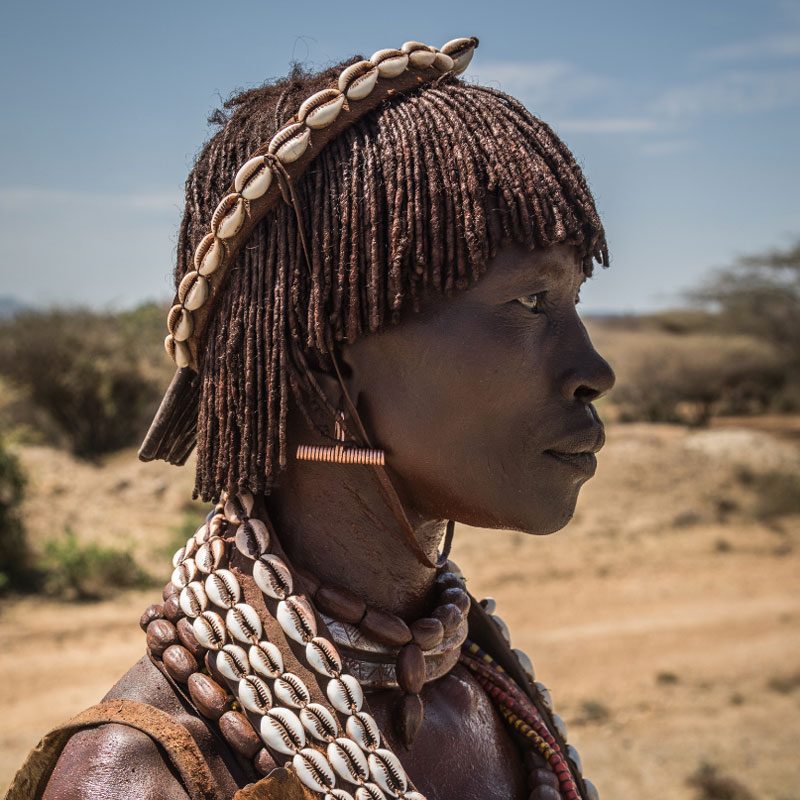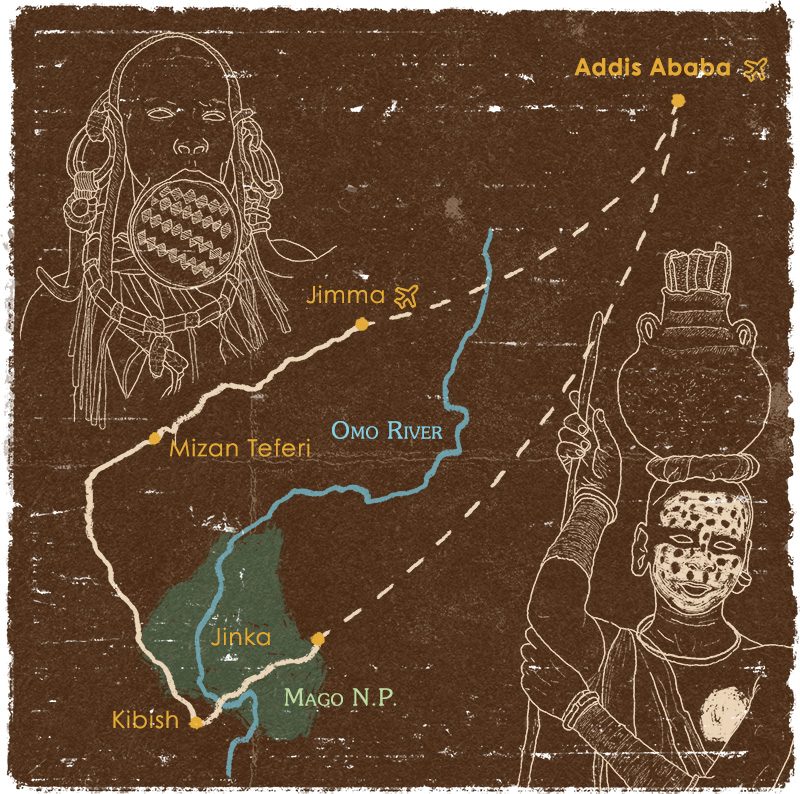Discover the highlights of this tribal trip to Ethiopia
We will attend the Bull Jumping Ritual of the Hamer people
The Hamer live in villages made up of cabins made of branches arranged in a circle, in which several linked families reside. The Hamer people are mainly dedicated to livestock and sorghum cultivation. There is a division of labor according to gender and age. The traditional clothing of the Hamer tribe is made with animal skin, from which different types of pieces are produced. The Hamer ethnic group places great importance on their aesthetics, specifically their hairstyle. Hamer rub their hair with a mixture of butter, lime and ocher earth, then shape it and decorate it with feathers. The unique initiation ritual of the Hamer people consists of jumping from one back to the other of a row of bulls. The initiate must walk through the line without falling to obtain the right to own livestock, marry, and have children. During the celebration, the community gathers to encourage the young people with songs. During this tribal trip to Ethiopia, we will try to attend the bull jumping ritual of the Hamer tribe.
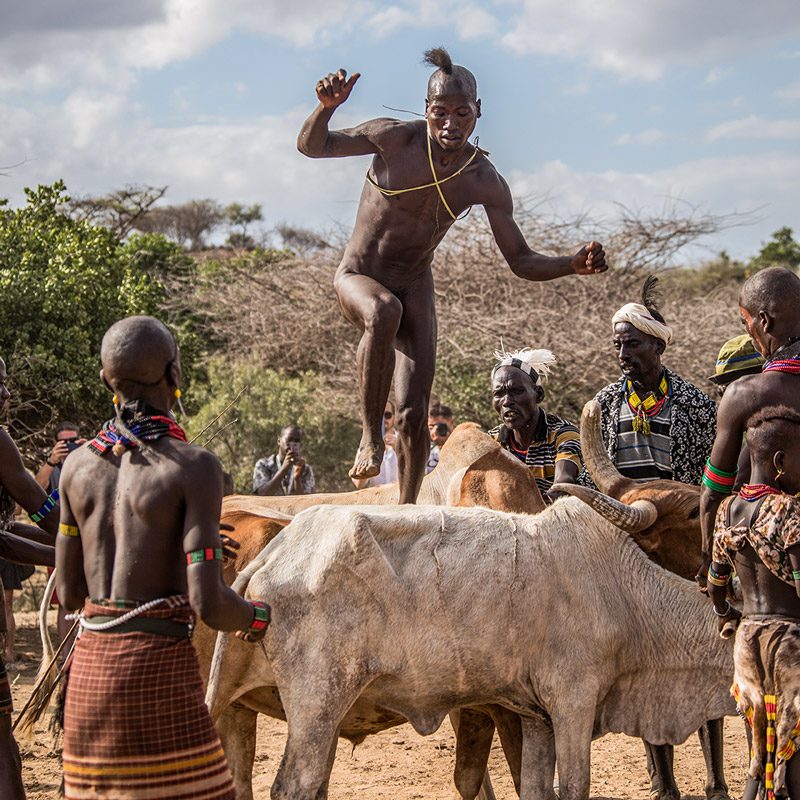
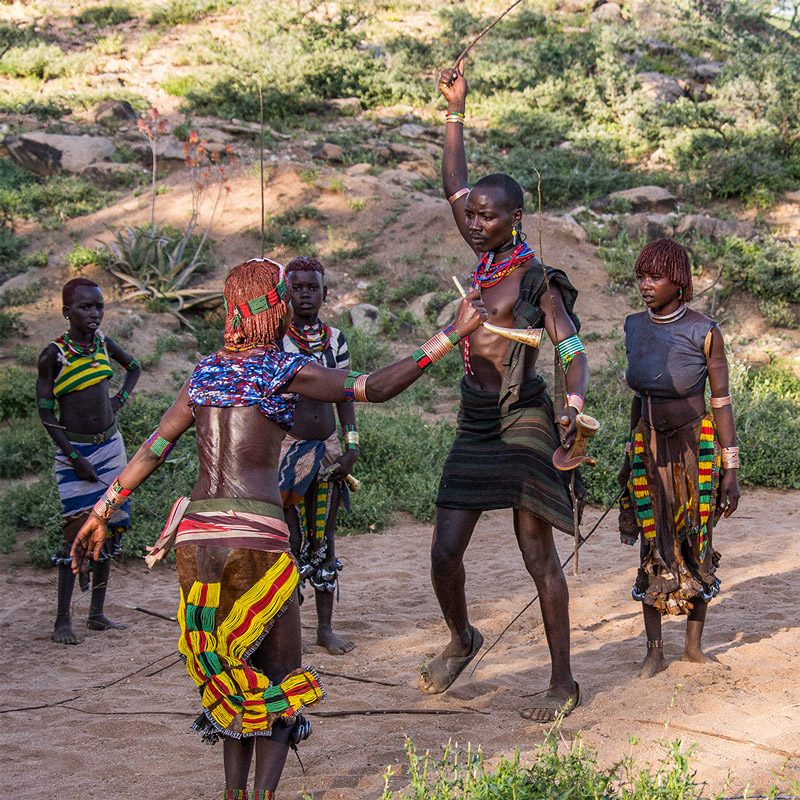
We will meet the Banna tribe
The Bana tribe is closely related to its Hamer neighbors, both in language and in culture or aesthetics. During this tribal trip to Ethiopia, we will try to understand their culture and observe the differences with the Hamer. The Banna are mainly engaged in agriculture and complement it with herding, hunting and gathering. They are mainly Muslims; however, several thousand are Christians and have their own king.
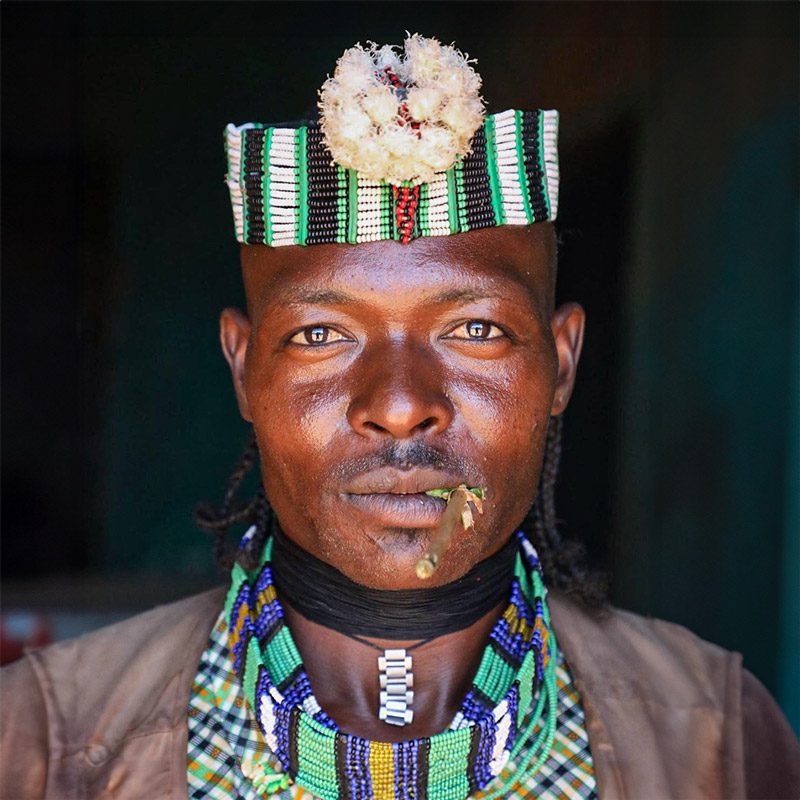
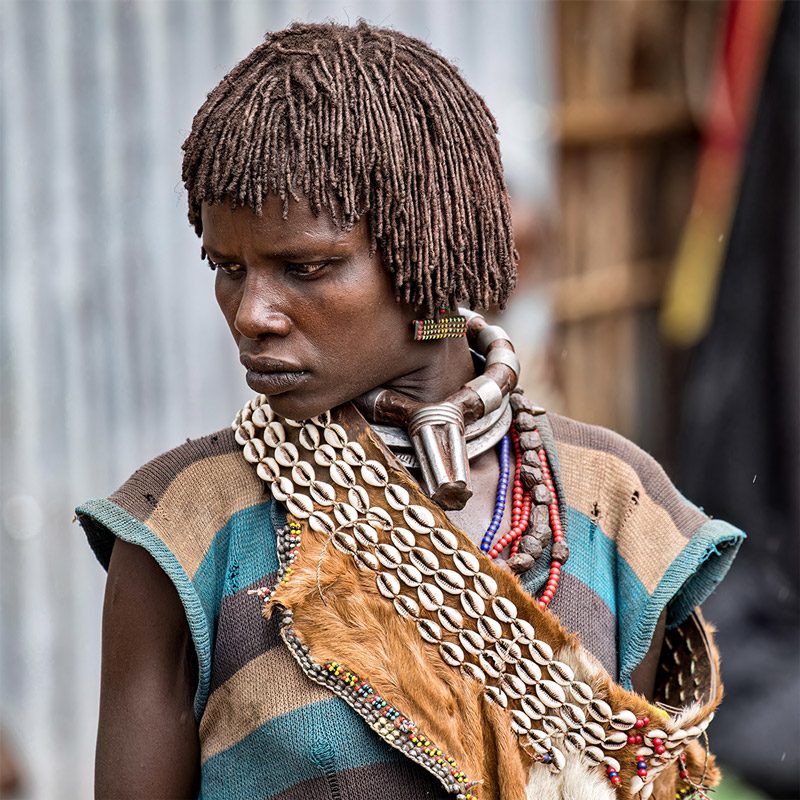
Meeting with the Nyangatom tribe on this tribal trip to Ethiopia
We will continue our exploration of this region of the Omo Valley by visiting the Nyangatom. The Nyangatom community are predominantly pastoralists, relying on cattle herding as their main source of livelihood, which is deeply intertwined with their cultural identity and social structure. We will learn about the vibrant traditions of the Nyangatom people, including elaborate ceremonies, music, and dance, which play a crucial role in their communal life. One of the most notable aspects of Nyangatom culture is their distinctive body adornments, including intricate scarification patterns and colorful beadwork, which signify beauty, status, and tribal affiliation. The community is also recognized for its traditional practices, such as the age-set system, which organizes individuals into groups based on their age and plays a significant role in social organization and responsibilities.
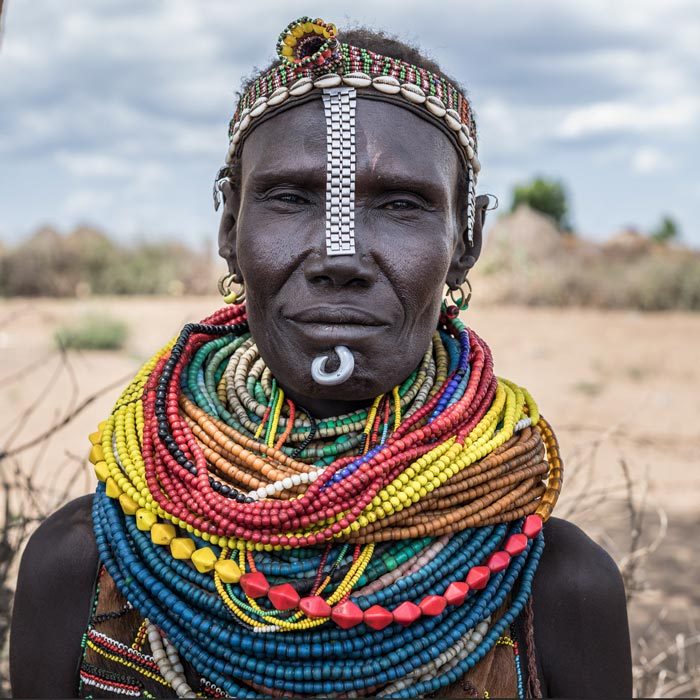

We will visit the Mursi tribe
On this tribal trip to Ethiopia, we will have the opportunity to meet the mythical Mursi tribe, famous for the tradition of women wearing lip plates. Visiting a Mursi village in the Mago National Park will be a unique experience. The main characteristic of the aesthetics of the Mursi people is the clay disc that they wear, placed in a cut on the lower lip. But the body paintings and scarification of the Mursis are also extraordinary. The Mursi believe in a greater force called Tumwi that resides in the sky, although it sometimes manifests itself in the form of a rainbow or bird. In the Mursi communities, two figures stand out: the Kômorus priests, responsible for the well-being of the group, who act as mediums with their god; and the Jalaba, who have a political role.
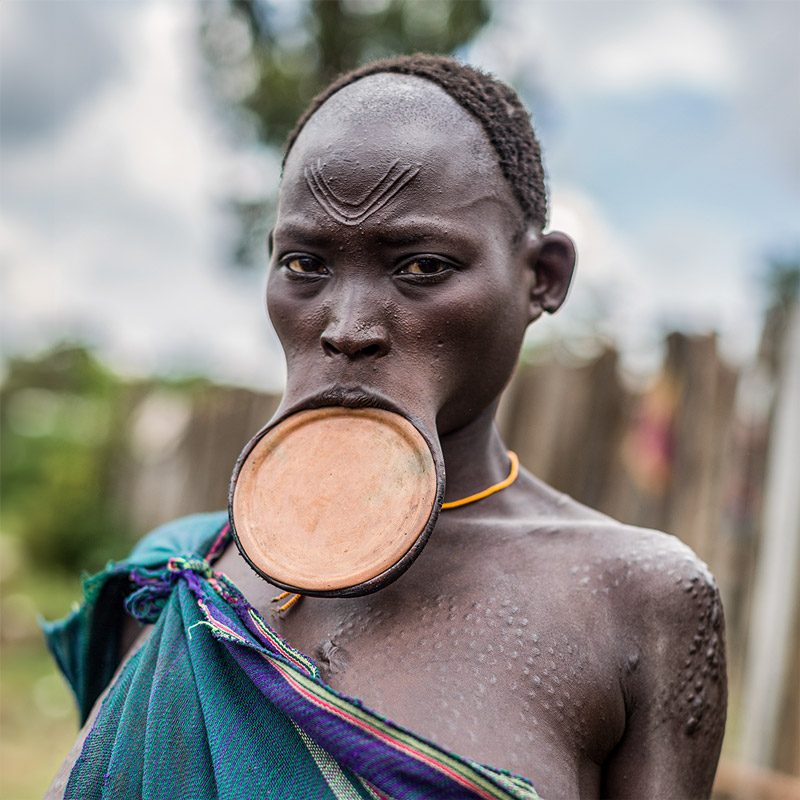
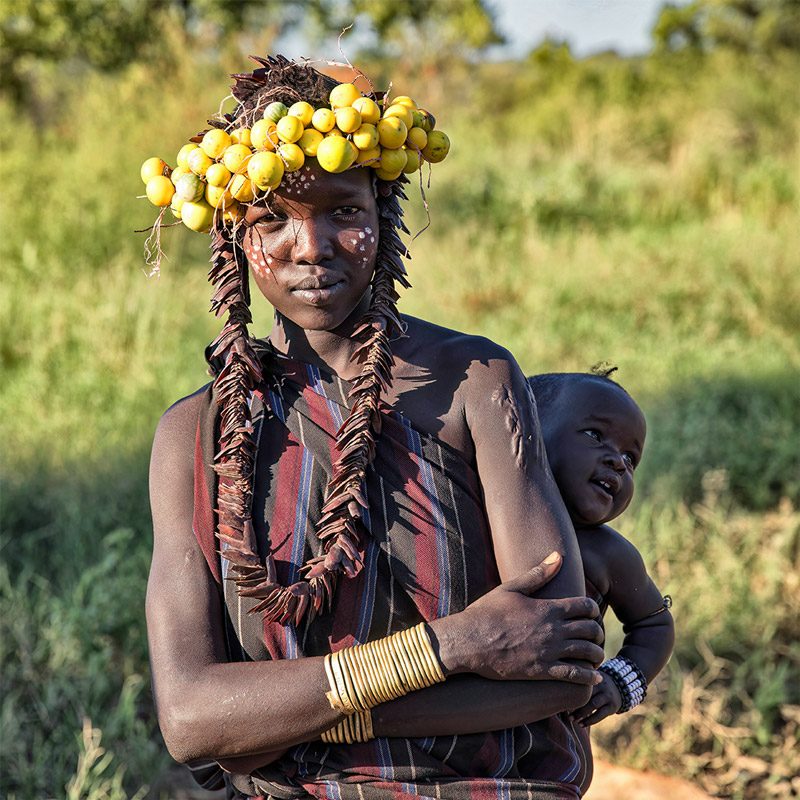
We will meet the Surma people during this tribal trip to Ethiopia
This little-known tribe belongs to the Suri ethnolinguistic group, and they are mainly agro-pastoralists. The Surma tribe live around the town of Kibish, in the southwestern region of Ethiopia, very close to the border with South Sudan.
We will discover the Surma culture. They are known for their rich cultural heritage, which includes unique customs, traditional music, and vibrant ceremonies. The Surma rely on cattle herding for their livelihood, which plays a central role in their social structure and identity. One of the most striking aspects of Surma culture is their distinctive body art and lip plates, particularly among women, which serve as symbols of beauty and social status. The community is also famous for its traditional fighting contests, the “donga” or stick-fighting, that are significant events that foster community bonds and showcase bravery.
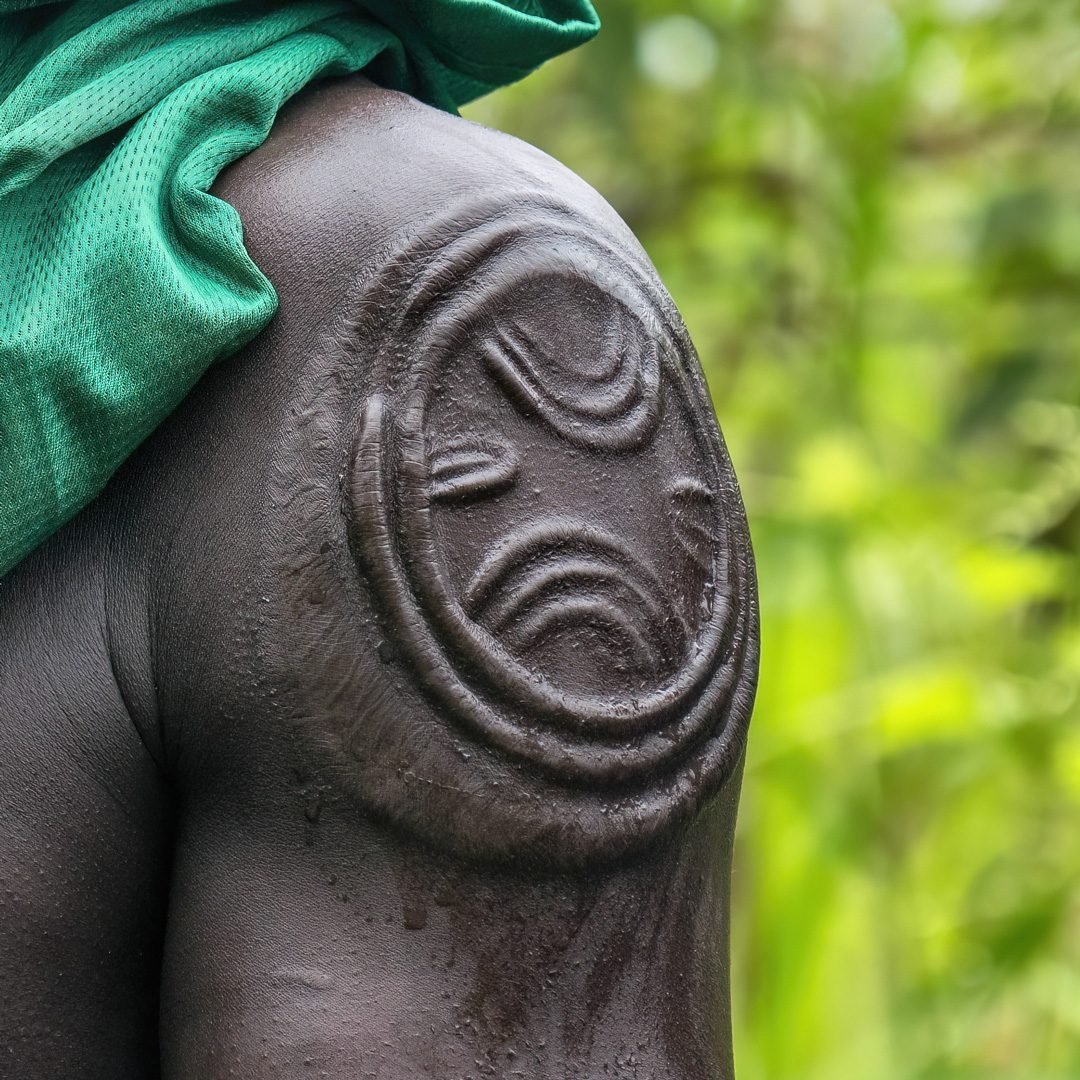

© Photos by Jordi Zaragozà Anglès and Aníbal Bueno taken during a tribal trip to Ethiopia.
► Download the detailed itinerary for this tribal trip to Ethiopia
Click on the button below to easily access the download form for this tribal trip to Ethiopia itinerary.

